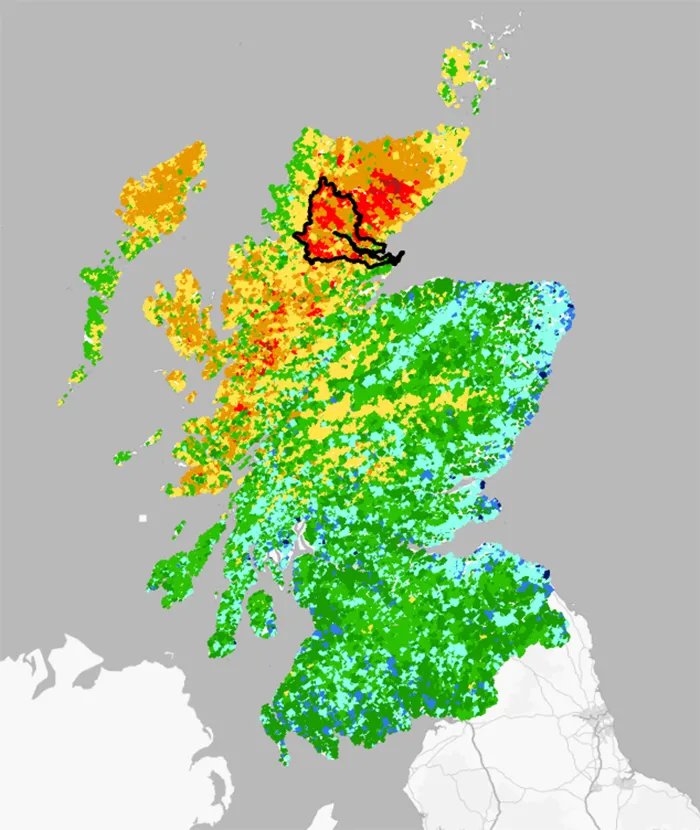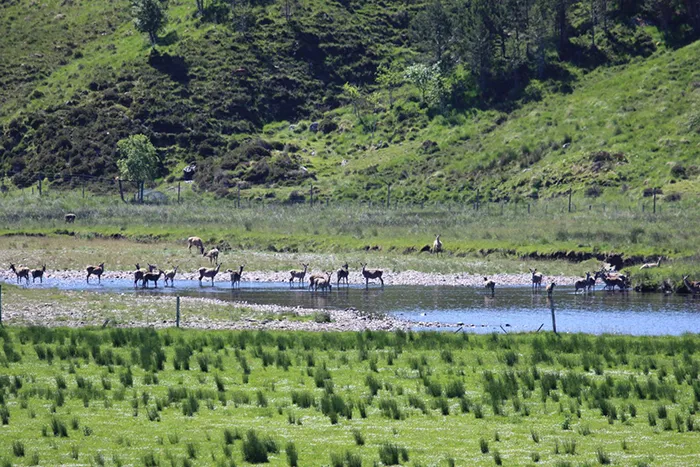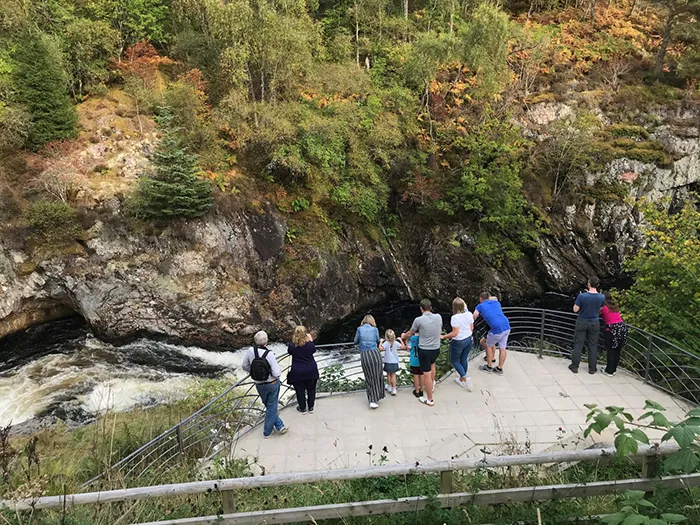
With a warming climate these extremes will be reached and thermal stress will occur more often, which could have profound inpacts on the abundance and distribution of aquatic organisms. Temperature modelling undertaken as part of the Scottish River Temperature Monitoring Network (SRTMN) has identified that waters within the Kyle of Sutherland District are at high risk. When 28°C is experienced by Atlantic salmon of over 7 days there will be mortality, but 33°C is lethal over a window as small as 10 mins.
An ecological solution to this problem is the creation of riparian woodland, which would provide shade on water courses and keep water courses cool during hot summers. As well as supporting Atlantic salmon and sea trout/brown trout, riparian ecosystems can also support invertebrates, bats, otters and some iconic bird species including Osprey and white-tailed eagles. The Kyle of Sutherland Rivers Trust is aiming to encourage riparian planting schemes, under a nationwide effort is which being led by The Scottish Wildlife Trust under the Riverwoods initiative.
“The key purpose of the Riverwoods initiative is to create a network of riparian woodland and healthy river systems throughout Scotland, which will deliver a range of benefits including flood protection, improved water quality and improvements for salmon fisheries, as well as helping to tackle the twin challenges of climate change and biodiversity loss.
Many organisations and landowners are already undertaking river restoration projects, and Riverwoods will provide an opportunity to help join these up across Scotland. We will collectively share knowledge of the science underpinning riparian restoration, support landowners to carry out practical work, identify and address evidence gaps, showcase best practice and explore novel forms of financing to enable riparian restoration to be carried out at scale.”
We would like to hear from anyone with an interest in this area, from volunteers to help with planting to riparian landowners who would like to have planting schemes and contribute to the safeguarding of our aquatic ecosystems.
Since 2021 the proceeds of our online auction go towards our participation in the Riverwoods initiative.
Interactive River Temperature & Riparian Planting Priority Map

Here is an interactive map detailing Marine Scotland’s Scottish River Temperature Monitoring Network (SRTMN) Layers. To toggle available layers, press the arrows in the top left corner of the map to expand the menu. You can select which layers to display. You can also view the legend for a layer by clicking on the layer, and then the legend tab which pops up. Please ensure to view the legend when interpreting these layers, as colour schemes change depending on the layer being viewed.
Why Riverbank Woodlands?

Scotland is predicted to have hotter, drier summers and wetter, milder winters in the future. Shallow, wide burns in the upper catchments of Highland river basins are likely to experience relatively more severe increases in water temperature when compared to other regions. Streams aligned north-south lacking in shade from native riparian trees are most vulnerable to warming temperatures, with juvenile Atlantic Salmon experiencing significant stress when water temperatures rise above 23°C.

Trout temperature thresholds are even more sensitive than those of Atlantic Salmon. Increasing temperatures are already damaging invertebrate communities, thereby reducing the availability of food for juvenile fish. The Kyle of Sutherland rivers are also home to critical populations of Freshwater Pearl Mussel and the UK Met Office predicts that severe heatwaves will occur every other year by 2050 if current climate trends continue.
Due to a range of pressures, Scotland has lost more than 95% of its former native woodland cover in recent centauries. Further, according to the Native Woodland Survey of Scotland, more than 60% of our remaining native woodland habitat is significantly impacted by herbivores, preventing natural regeneration.

Riverbanks devoid of shade and habitat with erosion taking place.
Native riverbank woodland provides shade and helps to keep rivers cool during hot summers. As well as supporting Atlantic salmon and trout, riparian trees can also support invertebrates, bats, otters and many bird species. The Kyle of Sutherland Rivers Trust is aiming to encourage and deliver riparian planting schemes, under a nationwide ‘Riverwoods’ initiative.
The key purpose of Riverwoods is to create a network of riparian woodland and healthy river systems throughout Scotland, which will deliver a range of benefits including flood protection, improved water quality and improvements for threatened fish populations, as well as helping to tackle the twin challenges of climate change and biodiversity loss.

Families spotting leaping sea trout and salmon at the Falls of shin, surrounded by riverbank woodlands


